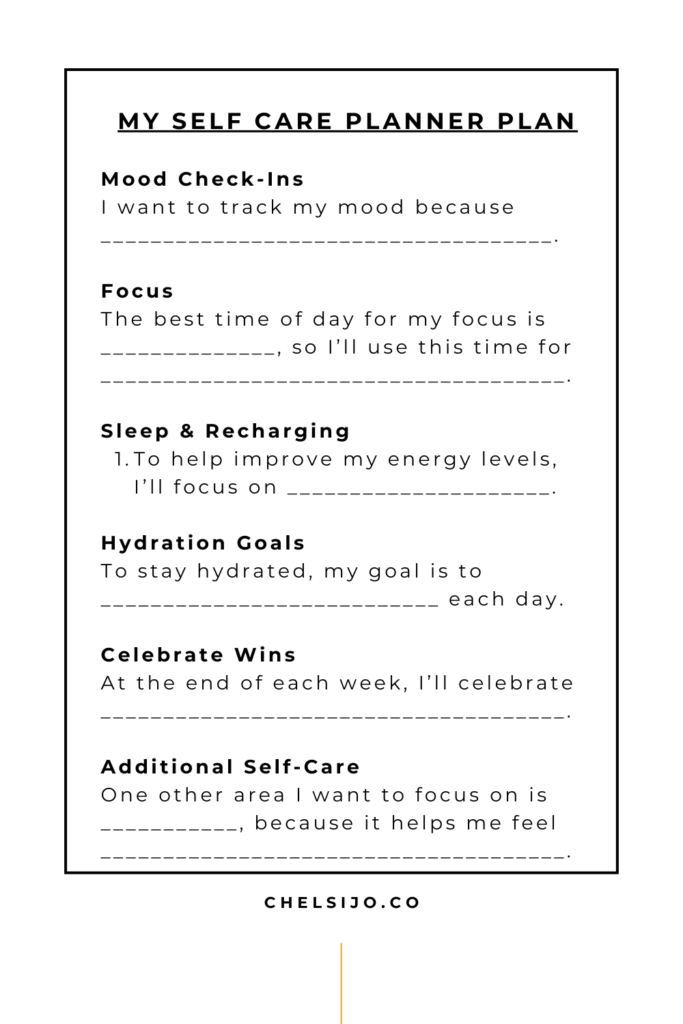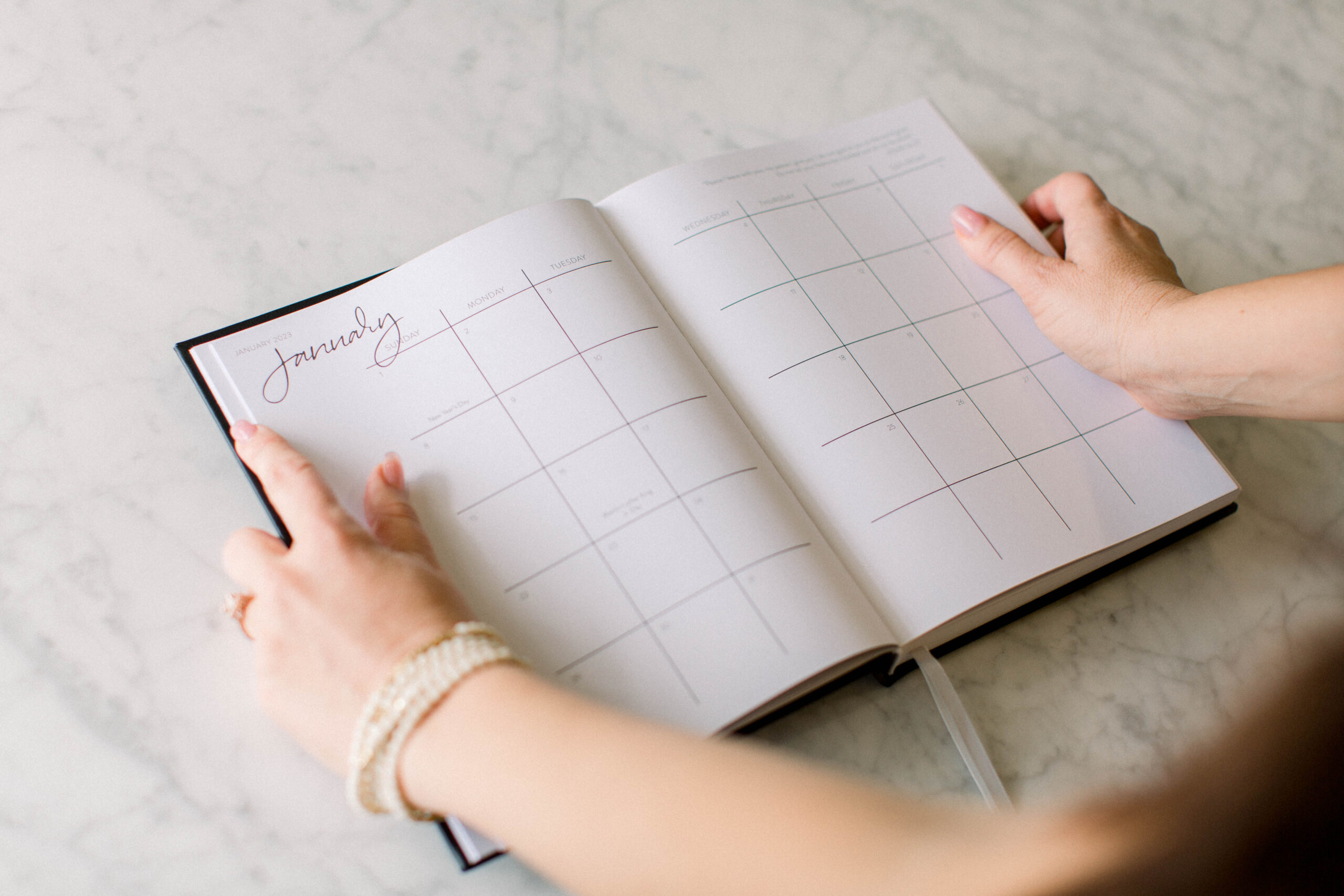Today, we’re diving deep into a fresh approach to using your planner. It’s not just for organizing to-dos or time blocks but can be used for tracking and improving your overall well-being. If you’re ready to take your paper planner beyond productivity and turn it into a powerful tool for self-care, keep reading!
In this blog, we’ll walk through four ways to transform your planner into a self-care tool that supports your emotional, mental, and physical health. We’ll go over practical steps for incorporating your mood, monthly cycle, energy, sleep, water intake, and even ways to celebrate your wins—all of which can reveal valuable insights about your well-being and routines.
Be sure to check out these other blog posts for more on using a physical paper planner: Breaking The Habit Of Digital Distractions With A Paper Planner, My Favorite Horacio Planner! Interview With CEO Polly Payne, and 5 Ways to Use Your Planner This Year: Make Every Day Count.
Listen Below For The Entire Episode On The Systemize Your Life Podcast
Self-Care Tool #1: Mood & Monthly Cycle Tracking
Your mood and cycle are closely connected, and understanding how they impact your day-to-day can help you adjust expectations and routines. Use a small area on your monthly layout to jot down your mood. Whether it’s a smiley face, a number, or a descriptive word. Include a quick note about where you are in your cycle to see how hormonal changes might be affecting your emotions. By layering these two elements together, you’ll begin to notice patterns. This allows you to better plan your tasks and adjust your activities around your energy and mood fluctuations.
Self-Care Tool #2: Weekly Energy Levels & Sleep Patterns
Tracking your energy and sleep can provide valuable insights into your daily productivity and help reduce digital distractions. Use your weekly layout to mark your energy peaks and lows throughout the day. Make note of when you feel most energized or need a break. If you use a device to track sleep, transfer the data into your planner. Also logging your bedtime and wake-up times to identify patterns that affect your energy and mood. This manual tracking process allows you to notice correlations that may go unnoticed with an app alone.
“Incorporating small moments of self-reflection into your planner can create a big-picture view of what you need to feel your best.” – Chelsi Jo
Self-Care Tool #3: Hydration Tracking
Staying hydrated impacts both physical and mental well-being. Create a simple check mark system in your planner to log your daily water intake. This small habit helps you stay mindful of how much water you’re drinking, especially if you’re working to meet a specific daily goal. Keeping track of hydration in your planner can help you prevent fatigue and irritability, as well as ensure you’re reaching your water intake goals regularly.

Self-Care Tool #4: Celebrate Your Wins
One of the most overlooked aspects of self-care is acknowledging and celebrating our accomplishments. Take time at the end of each week to jot down your wins. Did you hit a milestone in your workout routine? Did you successfully plan meals for the week? Or simply got the kids to bed on time? Recording these achievements boosts motivation and positivity. If weekly reflections feel too frequent, try doing this monthly to see the bigger picture of your progress and growth.
Putting It All Together: Practical Tips for Tracking in Your Planner
Here’s how to implement this self-care tracking system:
Set Up a Key
At the beginning of each month, create a key or legend for tracking mood, cycle, energy, and sleep in your planner.
Daily, Weekly, Monthly Entries & Check-ins
Record your moods and any cycle-related notes in the monthly layout, then use your weekly layout for sleep, energy levels, and hydration. At the end of each week, take a few moments to reflect on and celebrate your wins.
Remember, this isn’t about perfection. It’s about creating a space that serves as a reflection of your health and routines, giving you insights to help make small, meaningful adjustments. By tracking mood, energy, sleep, hydration, and wins, you’ll see how your self-care routine supports your life—and be able to refine it as you go.

Start Tracking In Your Planner Today
With a few small changes, your planner can become a powerful self-care tool. It can bring you closer to a balanced life that prioritizes mental, emotional, and physical well-being. By adding these simple steps to your planning routine, you’re not only managing your schedule but also taking charge of your health and happiness.
Ready to start using your planner as more than just a productivity tool? Give these ideas a try and discover a new level of intentional living.


How can tracking in a planner contribute to self-awareness?
Tracking elements like your mood, energy levels, or even small wins each day helps you notice patterns and understand what impacts your well-being. Over time, this creates a valuable record of insights that can guide you in managing your energy and emotions effectively.
What’s an easy way to start using a planner for self-care?
Start small by jotting down one line about how you felt that day or one thing that brought you joy. Simple reflections like these turn into powerful insights over time, showing you what enhances or drains your energy.
What planner should I use if I don't have one yet?
I highly recommend the Dream Planner by Horacio Printing for its flexibility and blank canvas approach. It’s designed to help you manage your time effectively while minimizing distractions.


